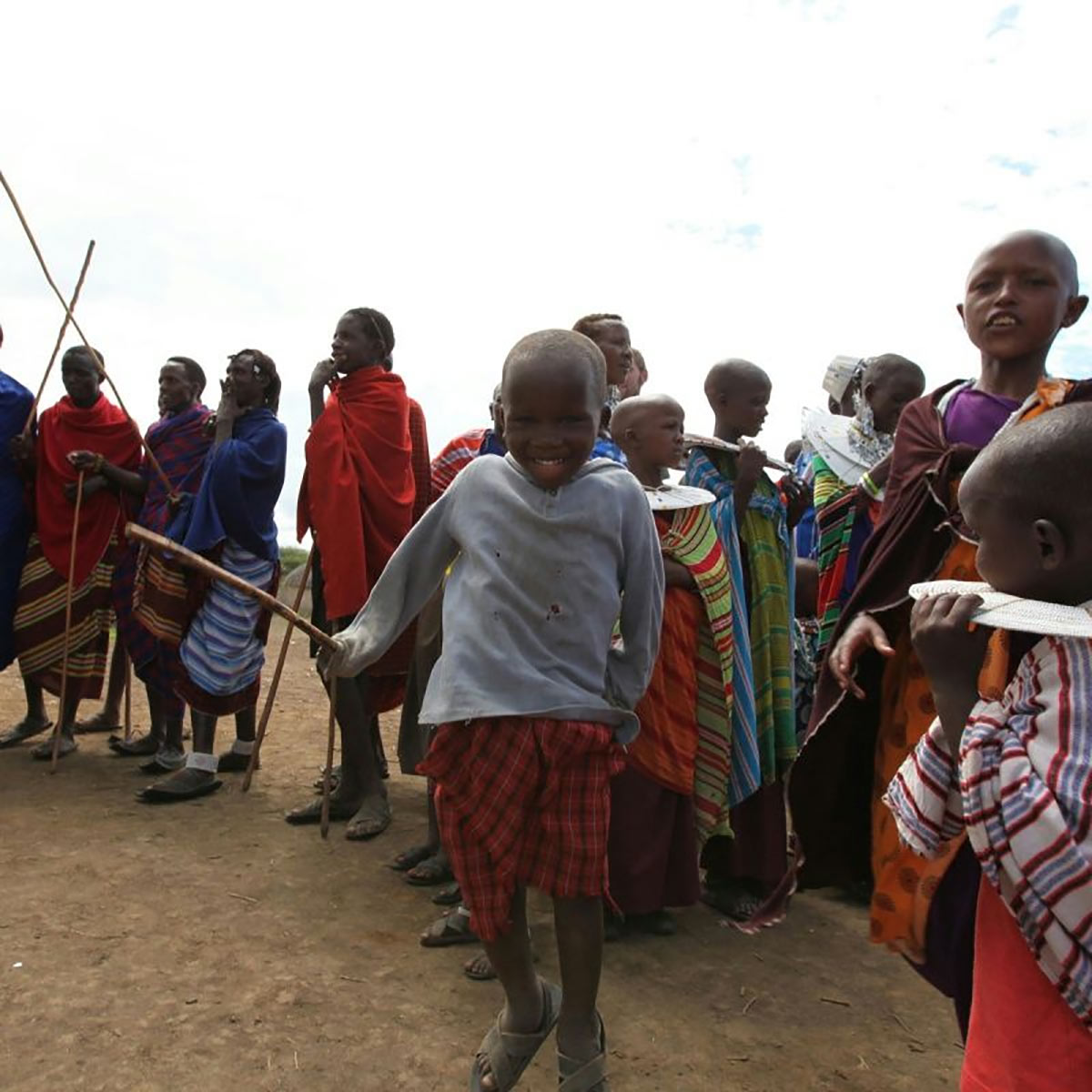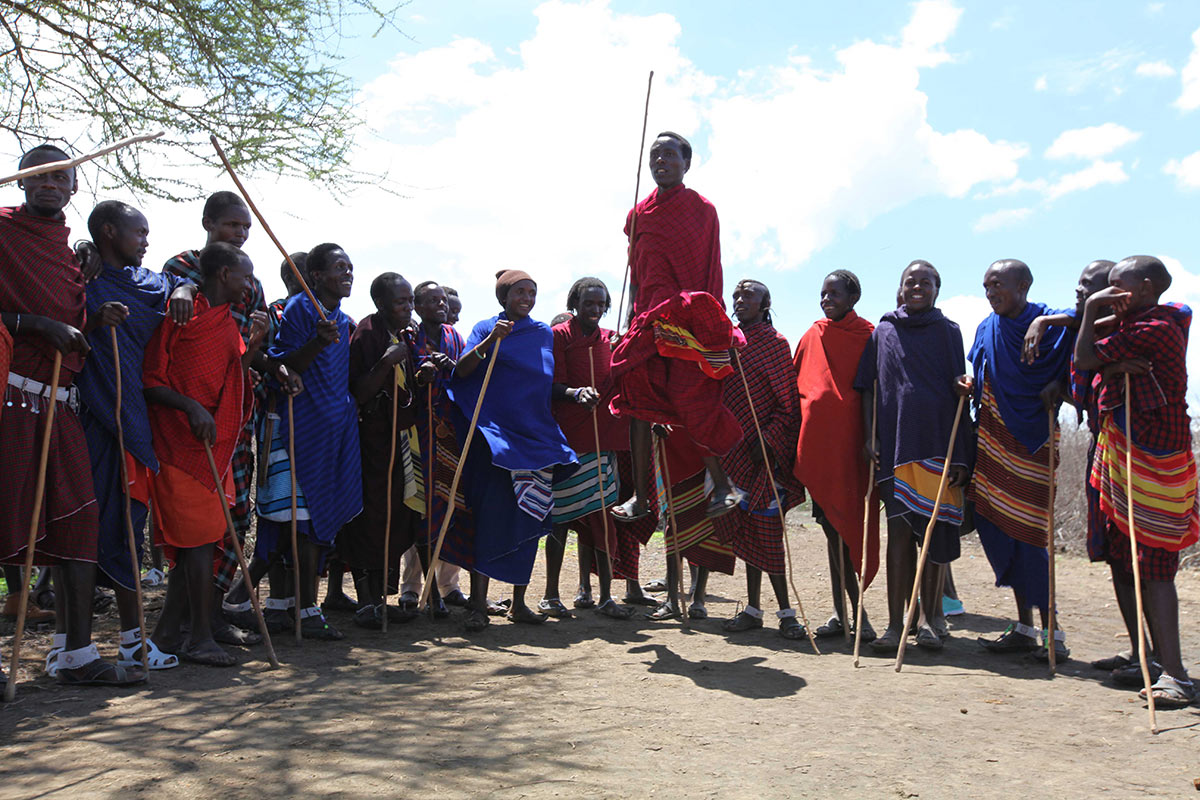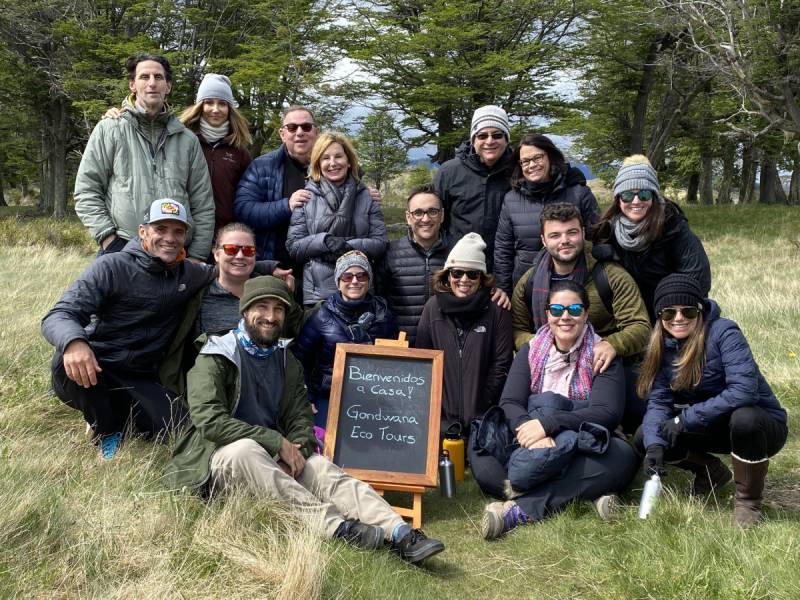The Maasai are one of Africa’s most iconic tribes. Dive into who the Maasai are, and the fascinating history and culture of the tribe. The Maasai people are known for their distinctive customs, vibrant traditional clothing, and rich oral storytelling tradition. They are primarily nomadic pastoralists, relying on cattle for their livelihood and sustenance. The Maasai culture places a strong emphasis on communal living and a deep connection to the land. Their traditional dances and ceremonies are not only visually striking but also hold significant cultural and spiritual meaning. By delving deeper into the intricate customs and way of life of the Maasai, we gain a greater appreciation for their resilience and unique heritage in the modern world.
Where are the Maasai from?
The Maasai are semi-nomadic. This means they spend time living in temporary dwellings and practice seasonal migration, but they often have a semi-permanent settlement too. They live in the Great Lakes region of Africa, between southern Kenya and northern Tanzania. Recent records show there are over 800,000 Maasai people in Kenya and 430,000 in Tanzania. The Maasai lifestyle is largely similar to that of their ancestors, but modern influences are beginning to impact the tribe.
As the Maasai people navigate the delicate balance between preserving their traditional way of life and adapting to modern influences, challenges and opportunities arise. With increased exposure to the outside world, some Maasai individuals are embracing aspects of modernity, such as education and technology, while others strive to uphold their cultural heritage. This dynamic shift within the Maasai community reflects a broader global trend of indigenous populations grappling with the complexities of cultural preservation in the face of globalization. The Maasai’s resilience and adaptability will continue to shape their identity and legacy for generations to come.
The History of the Maasai
 The Maasai oral history tells us that the tribe originated in northwest Kenya, in the lower Nile Valley. Around the 15th century, the Maasai began migrating south. Between the 17th and late 18th centuries they arrived in the area that stretches from what is now northern Kenya to central Tanzania
The Maasai oral history tells us that the tribe originated in northwest Kenya, in the lower Nile Valley. Around the 15th century, the Maasai began migrating south. Between the 17th and late 18th centuries they arrived in the area that stretches from what is now northern Kenya to central Tanzania
During their migration, the Maasai developed a distinct and rich cultural heritage that set them apart from other tribes in the region. Their pastoral way of life, centered around cattle herding, became an essential part of their identity. The Maasai are known for their unique attire, intricate beadwork, and traditional dances, all of which reflect their deep connection to their land and ancestors. As they settled in the vast savannah lands of East Africa, they established a strong communal structure based on age sets and elder councils that continue to play a vital role in their society today. The Maasai’s resilience and adaptability over the centuries have allowed them to preserve their traditions while navigating the challenges of a rapidly changing world.
Maasai Culture
Tepilit Ole Saitoti, a renowned Maasai writer, is famously quoted to have said, “Without the land and cattle, there will be no Maasai”. Cattle are a main pillar of Maasai society. Cattle herding contributes a large part of their identity, and livestock ownership is a sign of status. The animals provide resources such as raw meat, milk, and blood, which are staples of the Maasai diet. The purpose of their movement as semi-nomads is to find new grazing land for their cattle, as well as their other livestock, which includes goats and sheep. They relocate themselves and their livestock in a communal land management system that is based on seasonal rotation. Moving across vast areas also allows the Maasai to trade and barter with other tribes.
In terms of social organization, Maasai culture is very focused on tradition. As people grow from childhood to adulthood to old age, responsibilities, roles and titles are passed on. These rites of passage are usually accompanied by ceremonies and rituals. Maasai men and women have performed the same roles for centuries. Men perform the duties of acting as warriors and livestock herders. Women complete household chores, milk cattle, and gather firewood.
The division of labor within Maasai society is not just about duties, but it is deeply ingrained in their cultural beliefs and values. Men and women in Maasai culture have distinct roles and responsibilities that are crucial for the survival and prosperity of the community. While men are traditionally responsible for protecting the tribe and managing the livestock, women play a vital role in maintaining the household and ensuring the well-being of the family. This division of labor is not seen as a form of inequality, but rather as a harmonious way of functioning that has been passed down through generations. The respect for each other’s roles and the interdependence between men and women are fundamental aspects of Maasai social organization.

How Geography Shapes Maasai Culture
The Maasai people, a Nilotic ethnic group, traditionally inhabit the Great Rift Valley region of East Africa, specifically in southern Kenya and northern Tanzania. This area includes prominent natural landmarks like Mount Kilimanjaro, Mount Meru, and the Ngorongoro Conservation Area. The region’s geography—marked by vast savannahs, seasonal rivers, and proximity to wildlife reserves and national parks—has had a significant influence on the Maasai’s way of life.
Living among wild animals in open grasslands, the Maasai developed a culture centered on cattle herding and a semi-nomadic lifestyle. Their traditional diet of milk, animal blood, and meat reflects their close relationship with livestock. Maasai homes, made from cow dung and calf hides, are designed for mobility and built using natural materials suited to their environment. The need to move herds seasonally for grazing shaped not only their economy but also social roles, including those of young warriors who protect the community. Music, dance, traditional clothing, and rituals are all influenced by their surroundings, reinforcing a lifestyle closely tied to the rhythms of East African land and wildlife.
Maasai Language
The Maa language spoken by the Maasai people is closely related to that of neighboring tribes, such as the language of the Samburu people of central Kenya, and to Camus spoken south of Lake Baringo, and the Latuko language spoken in South Sudan. In simple terms, the name ‘Maasai’ itself translates to ‘people who speak Maa’. The Maa language is spoken only, not generally written down. This oral tradition is how their history has been passed from generation to generation throughout the centuries.
The Maasai people have maintained a strong bond with their language, using it as a tool to preserve their cultural heritage and traditions. Through the oral tradition of passing down stories, legends, and wisdom from one generation to another, the essence of the Maasai identity is deeply embedded in the Maa language. This linguistic connection not only serves as a means of communication but also as a symbol of unity and pride among the Maasai community. Despite the challenges posed by modernization and globalization, the resilience of the Maa language continues to be a testament to the rich history and resilience of the Maasai people.
Maasai Song and Dance
Music and dance are central to Maasai culture, woven into daily life, ceremonies, and rites of passage. The Maasai are especially well known for their traditional jumping dance, known as Adumu, a striking and symbolic performance that has become one of the most widely recognized images of the Maasai people. Maasai music traditionally features layered rhythms and harmonies created by a chorus of vocalists, accompanied by a solo melody sung by the olaranyani, or song leader.
Historically, the Adumu is performed during Eunoto, a significant coming-of-age ceremony that marks a young man’s transition into a warrior. These ceremonies span several days and involve communal gatherings filled with music, ritual, and competitive dancing. During Adumu, young Maasai warriors leap high into the air, keeping their bodies straight and their feet together. The higher the jump, the greater the display of strength and stamina—qualities deeply valued among young warriors preparing to take on protective and leadership roles within the Maasai community.
The power of the performance is heightened by the chorus of vocalists singing harmonies in a call-and-response style. Their chants provide rhythm and energy, building a sense of collective spirit. Women also play a vital role in Maasai musical traditions. Women recite lullabies to their children and perform songs during weddings, births, and other family events. These songs preserve stories, express emotion, and strengthen the bonds within the Maasai community.
For the Maasai, music and dance are not just art forms but a way of expressing identity, marking transitions, and honoring their deep connection to the land, ancestors, and one another. Whether through the powerful jumps of young warriors or the soft lullabies of Maasai women, each song and movement reflects a culture rooted in tradition, resilience, and shared experience.

Maasai Adumu dances
Food and Diet of the Maasai Tribe
The traditional Maasai diet is a direct reflection of their environment, lifestyle, and deep cultural connection to cattle. As a Nilotic ethnic group living across southern Kenya and northern Tanzania, the Maasai have historically relied on livestock for both sustenance and social structure. Among the Maasai, cattle are not only a food source but also a symbol of wealth, status, and survival.
Traditional Maasai Diet
The traditional Maasai diet consists primarily of milk, meat, and animal blood, all derived from their cattle. Fresh cattle blood is often consumed during special ceremonies, mixed with milk for added nourishment. This high-protein and high-fat diet has supported the physically demanding lifestyle of young warriors, elder Maasai men, and herders alike.
Because Maasai lands are located in semi-arid regions where crop farming is limited, the tribe has traditionally not relied on agriculture. Instead, they have developed a food system adapted to the dry climate, rooted in their nomadic life and close relationship with their animals. Animal blood and milk provide essential nutrients and hydration, especially during dry seasons when water and food are scarce.
Modern Shifts in the Maasai Diet
In modern Maasai communities, particularly those near national parks or urban areas, diets have begun to change. Many Maasai have started to incorporate maize meal (used to make ugali), rice, and vegetables as they interact with other tribes and adapt to more settled lifestyles. However, even as the diet evolves, the cultural importance of cattle-based foods remains strong among the Maasai people.
Food is not just sustenance in Maasai society—it plays a role in social status, rites of passage, and even spiritual practices. From the blood given to young men after initiation to the milk offered during visits and celebrations, every element of Maasai food culture connects deeply to their identity, land, and community.
Maasai Clothing
Distinctive dress and body adornment give the Maasai a unique visual aesthetic. Traditional clothing and body modification are iconic parts of Maasai culture, though specific styles can vary greatly based on the tribe and region, as well as age, gender, and social status.
Maasai clothing is largely made up of draped robes known as shukas, often dyed in bright reds, blues, and purples, and intricately adorned with handmade beadwork. The use of vibrant colors is not just aesthetic—there is practical reasoning behind it. The colorful garments help individuals stand out in the vast grasslands of southeastern Kenya and northern Tanzania, making them easier to spot from a distance. This visibility can be life-saving, especially in wildlife-rich areas where young boys and herders are vulnerable to lion or other wild animal encounters while tending cattle. Even women fetching water can face danger, so visibility is a form of protection and communication across the Maasai territory.
In addition to clothing, body modification holds cultural and spiritual significance among the Maasai. Stretching of the earlobes is a long-standing tradition, signifying beauty and maturity. Women wear large metal hoops or bead-adorned earrings, while young men may adopt different styles during rites of passage. Shaving the head is another symbolic act, performed during major life transitions such as circumcision, marriage, or initiation into warrior status. These practices reinforce a strong cultural identity and reflect the traditional Maasai people’s lifestyle, which is deeply tied to the land, community roles, and age-based stages of life.
Materials used in traditional clothing and adornment often come from the environment—calf hides, animal skins, and even cow dung for ceremonial accessories or construction. Young men wear black robes and white face paint after initiation ceremonies, marking their transition into warriorhood. Clothing and body art are not just for function or beauty; they carry the history, values, and survival wisdom of the Maasai people, passed down through generations living in the challenging but rich landscapes of East Africa.
Maasai Society
The Maasai people have held on to their traditional practices, while also adapting their lifestyle to modern times. The use of modern technology is becoming more common, with cell phones being useful for herders as tools to communicate and find grazing lands. More Maasai tribes have turned to farming to sustain their communities, rather than being exclusively livestock herders. Increasingly, some Maasai tribe members venture to cities and urban areas for work and to assimilate with modern life.
Governments in Tanzania and Kenya have urged the Maasai to abandon their traditions and join modern society completely, but the Maasai choose to modify their lifestyle based on their needs and remain largely independent.

Maasai Women
Maasai Houses & Structures
A traditional Maasai boma, or homestead, is a cluster of huts arranged in a circular layout and enclosed by a thorny fence made from acacia branches. This protective barrier helps guard against wild animals, which are common in Maasai territory across southern Kenya and northern Tanzania. Within the boma, a smaller central enclosure is often set aside to house livestock at night, reflecting the Maasai’s deep reliance on cattle for food, social status, and economic livelihood.
The huts, also known as manyattas, are oval or circular in shape and built using materials gathered from the surrounding environment. Wooden poles are driven into the ground to form the frame, which is then interwoven with smaller branches. This structure is plastered with a mixture of mud, water, and cow dung—a resource the Maasai use not only in construction but as part of their broader indigenous technology and traditional practices.
Due to the Maasai’s historically nomadic or semi-nomadic life, these shelters are intended to be practical, quick to repair, and suited for relocation. The responsibility for building the huts falls on the women of the community, who often take several weeks or months to complete them. These homes are more than just shelters—they represent the resilience, resourcefulness, and connection to the land that define traditional Maasai society.
Meeting the Maasai
The best way to learn about a culture is by meeting the people. A visit to a Maasai boma is a feast for the senses and a great way to enrich your time in Tanzania.
When you open your mind and learn about the Maasai, the Maasai open their boma to you and allow you to delve into their culture. A visit to a Maasai boma gives you the chance to see inside their homes, dance an Adumu with them, and support the communities through the Maasai Community Development Initiative. Learn more about Tanzania and the Safari Tours offered!
Join us on one of our upcoming departures for our Tanzania: Great Migration Safari, and you’ll get to visit the Maasai in their boma.

A young Maasai dancing!

